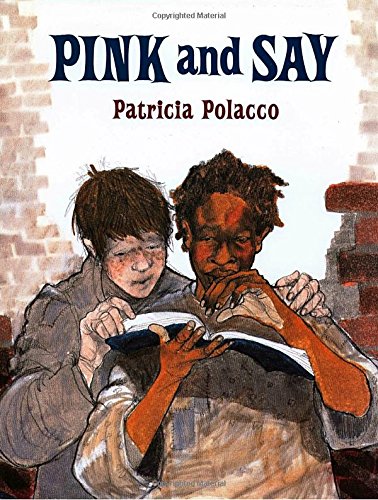 Summary: A picture book introduction as to what it’s like when a child’s father is living with another man. The story depicts a child’s view of his daddy’s “roommate,” meaning his live-in significant other. It appropriately introduces new concepts of family, friendship, change, acceptance, and love with a child's point of view in mind.
Summary: A picture book introduction as to what it’s like when a child’s father is living with another man. The story depicts a child’s view of his daddy’s “roommate,” meaning his live-in significant other. It appropriately introduces new concepts of family, friendship, change, acceptance, and love with a child's point of view in mind.Willhoite, M. (1991). Daddy’s roommate. New York, NY : Alyson Books.
Impressions:
When this book came out in 1991, the subject was cutting edge. It was deemed inappropriate simply because being gay or having gay parents was often sens as unacceptable, or the subject was left unspoken publicly. These days, it’s hard to imagine such a backwards point of view. Or is it? How much social integration has occurred in the past 25 years? The book is still valuable because it is an introduction as to what a family can look like. Heterosexual parents still separate, as they do in the book, and children deal with their parents seeing new people, and integrating new relationships into their lives. This is a real-life scenario that happens daily. While the book handles the trauma of major life changes a little too delicately, simplistically, and optimistically, what it is trying to do is prove that the concept of a new person in the family dynamic can be anyone: father, mother, male, or female. Kids these days deal with multiple parents, siblings, grandparents, from any combination of relationships, whether gay, straight, lesbian, or even transgender. The book still holds up, because the intention is true; the story exists to give younger kids the proof that fathers can have "roommates," they can exist with other men in harmony. I would hope that today’s reading audience would be more comfortable saying boyfriend, friend, or husband, but the “roommate” euphemism suffices for this particular story. While we don’t learn much about the two mens’ personalities, we see that the child accepts them as people. The two men sleep, eat, shop together. There is evident joy and humor, and it is mostly without judgement. This is certainly not the best option to provide children who have gay parents, since its message is too oblique and safe, it might be a good read for kids with cis-gender parents, looking to introduce the concept of gay parents.
“Willhoite's… colorful characters with their contemporary wardrobes and familiar surroundings lend the tale a stabilizing air of warmth and familiarity.” Publisher’s Weekly
(2000, April 3) [ Review of the book Daddy’s roommate, by M. Willhoite ]. Publisher’s Weekly. Retrieved from: https://www.publishersweekly.com/978-1-55583-178-3








